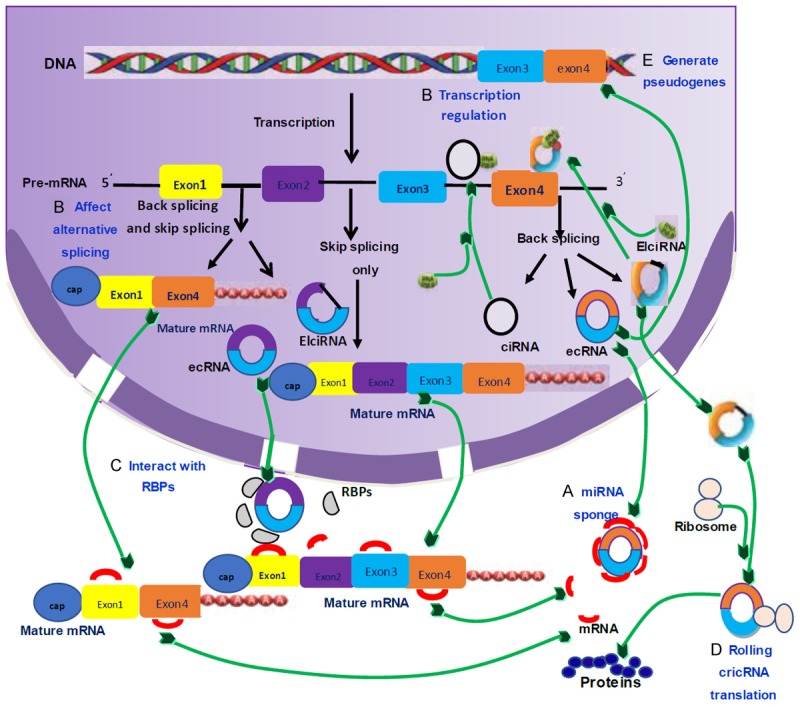Figure 2.

Liu J, Liu T, Wang XM, et al. Functions of the CircRNAs [39]. A. miRNA sponge: circRNA binds miRNA to affect its biological function and regulate miRNA target gene activity; B. Regulating selective splicing or transcription: stable ciRNAs and EIciRNAs are located in the nucleus, bind to RNAs and promote transcription; circRNAs compete with pre-mRNA splicing to reduce linear mRNA and exclude specificity from pre-mRNA to change the composition of processed mRNA; C. Interaction with RBPs: circRNA binds RBPs and ribonucleoprotein complexes to prevent these factors from functioning and play a “storage” function; D. Rolling circle translation: some in vitro circRNAs can be translated into proteins by means of a roll loop amplification mechanism. E. Generate pseudogenes: some circRNAs may be reverse transcribed into cDNA and integrated into the genome, and integration is not yet clear.
